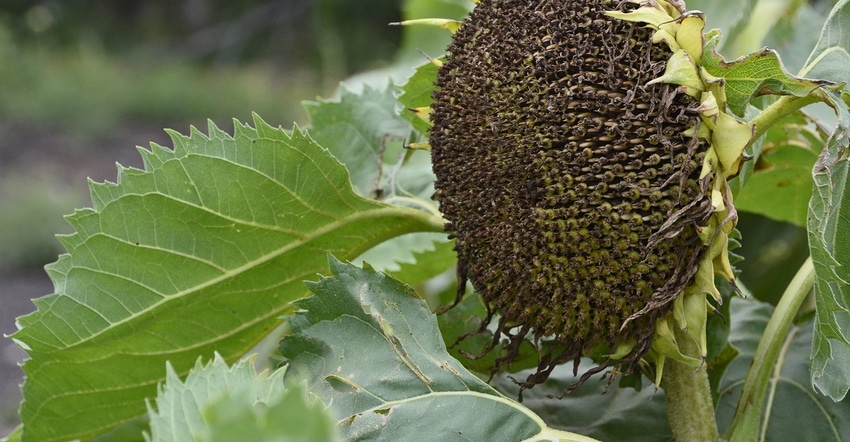
The 8% increase in sunflower acres this year over last year, coupled with a pretty good growing season, should mean a larger crop than last year, assuming normal weather through the rest of the fall.
Mid-July through August were drier than normal in many areas, but sunflower is very drought-tolerant. The majority of the U.S. crop has been rated in the good-to-excellent categories throughout the growing season.
In the Dakotas, crop conditions have turned around significantly from last year at this time when most of the sunflower crop was rated as being in very-poor-to-poor condition.
Market analysts are expecting U.S. sunflower yields and total production to be right around the five-year average this year, but we’ll know more once we get into harvest. USDA will provide its updated production estimate for sunflower in October.
Considering the small 2017 U.S. sunflower crop, sunflower seed stocks will be extremely tight by the end of this market year. There is a strong likelihood that price premiums will be in place to encourage growers to desiccate and harvest early to refill the pipeline with seed.
Crush plants are expected to be out early, offering 2019 new crop NuSun or high oleic contracts that have cash and or Act of God production clauses. Crushers will want to build on the momentum of the 2018 acreage gain, so sunflower prices are expected to be very competitive in relation to other crops.
World vegetable oil prices are expected to see only limited downward potential at current levels. This is good news for high oil bearing crops such as sunflower. Palm oil prices have been a drag on vegetable oil prices in general, but this is expected to reverse later this year. In addition, a potential El Nino event is expected to lead to reduced Southeast Asian palm oil output in 2019. Some traders think that meal prices and feed grains have the greatest potential for price declines due to potential burdensome U.S. stocks. The reduced oil supply should lead to oil providing a larger share of the crush value due to lower meal values.
In the months ahead, the ongoing trade fight with China will continue to be the main concern in the market unless cooler heads prevail, and an agreement is reached to end the trade war. The tit for tat trade dispute is affecting a number of commodities. Also, the U.S. dollar has gained ground against other currencies and expectations are that there will be further gains through 2019. The downside of a stronger U.S. dollar is that it could lead to a slowdown in exports as importers look for cheaper sources of product.
In preparation for harvest, producers are cleaning out storage bins and deliveries to crush plants have been increasing. This, along with new crop deliveries, could pressure prices in the short term.
Sanbakken is executive director of the National Sunflower Association.
About the Author(s)
You May Also Like






